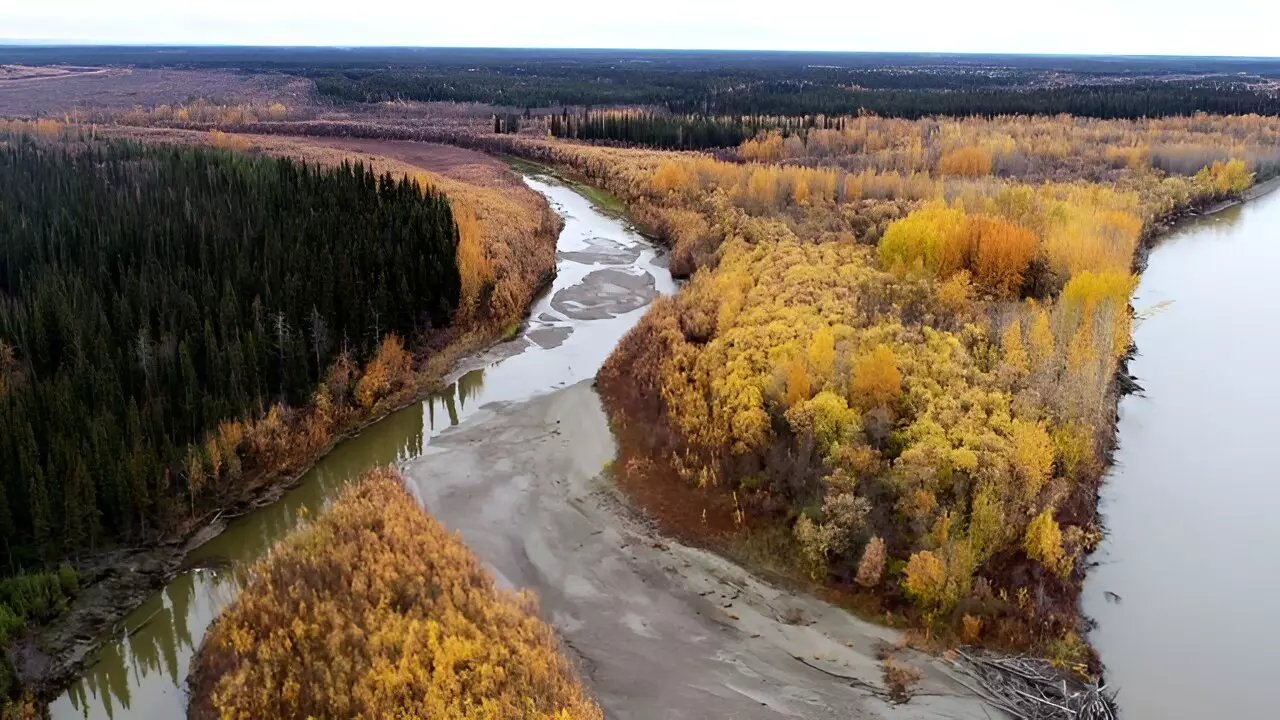Flowing towards the Bering Sea, the Yukon River is an iconic waterway that stretches across the Alaskan landscape, yet it carries within its currents a rising threat stemming from climate change. As temperatures in the Arctic escalate at an alarming rate—up to four times faster than the global average—the permafrost that has been stable for millennia begins to thaw and erode, releasing a long-dormant menace: mercury. The presence of this toxic metal poses severe health threats, especially to the approximately 5 million inhabitants of the Arctic region, where over 3 million reside in areas forecasted to lose their permafrost by 2050.
Recent research conducted by a team of scientists from various prestigious institutions, including USC Dornsife, Caltech, and MIT, sheds light on the intricacies of mercury release in the Arctic. Josh West, a co-author of the study, ominously remarks on the potential of a “giant mercury bomb” that could detonate with devastating consequences for the environment and public health. The accumulation of mercury in the Arctic is not a new phenomenon; it stems from the natural atmospheric circulation, which tends to concentrate pollutants in these high-latitude regions. This concentration is exacerbated by the chemical behavior of mercury, leading to higher levels of contamination than those found in oceans, soils, or the atmosphere combined.
Mercury settles in plants that absorb it from the environment, which then die and contribute to a frozen soil layer as they become part of the permafrost. This cycle has occurred over thousands of years, leading to significant mercury buildup. Yet, the warming climate disrupts this delicate balance, causing the permafrost to thaw and release accumulated mercury. The research team focused their studies around settlements in the Yukon River Basin, where they employed advanced methodologies to determine the extent of mercury in riverbank sediments rather than relying solely on core samples from the upper layers of permafrost.
The researchers recognized the inadequacies of previous methods that provided inconsistent estimates of mercury levels due to limitations in sampling depth. By exploring deeper soil layers and analyzing sediment samples, they uncovered more reliable data. Isabel Smith, a doctoral candidate involved in the study, noted that the Yukon River plays a crucial role in mobilizing sediments that contain mercury. This observation is significant as it affects how mercury-laden sediments are deposited along sandbars and banks—an understanding that is imperative to predict mercury movement within the ecosystem.
Remote sensing technology further enhanced the researchers’ ability to monitor changes along the Yukon River’s course, which can dramatically shift over time, impacting sediment erosion and deposition. Their findings indicated that finer-grained sediment contained higher mercury levels compared to coarser counterparts, igniting concerns regarding specific soil types and their potential risks to the environment. As Smith rightly observes, compiling various factors involved in sedimentation processes will yield a more accurate assessment of mercury awaiting release into the environment as climate change persists.
While immediate threats from mercury exposure may appear manageable, the slow accumulation of mercury in the food chain poses a greater danger over time, particularly concerning the wildlife and fish populations that local populations depend upon for sustenance. West clarifies that, unlike the acute contamination crisis seen in places like Flint, Michigan, the greater risk for Arctic communities lies in dietary exposure to mercury through fish and game. The nuanced processes of erosion and reburial of sediments along riverbanks further complicate the mercury exposure narrative, as not all released mercury remains accessible for uptake by organisms.
As the research team strives to better understand the family’s interconnected environmental dynamics, they express hope that the tools they have developed will not only help quantify the mercury threat but also present pathways for mitigation. The effects of decades-long exposure to rising mercury levels could pose significant health risks for indigenous communities reliant on traditional subsistence activities. Recognizing the potential for a “mercury bomb” to wreak havoc necessitates urgent action, fostering interdisciplinary research efforts that can catalyze protective measures.
The challenge presented by mercury in a warming Arctic is multifaceted, intertwining complex ecological mechanisms with the health burdens on local populations. Only through continued research, accurate assessments, and proactive strategies can we hope to mitigate this looming threat to both environment and health.

